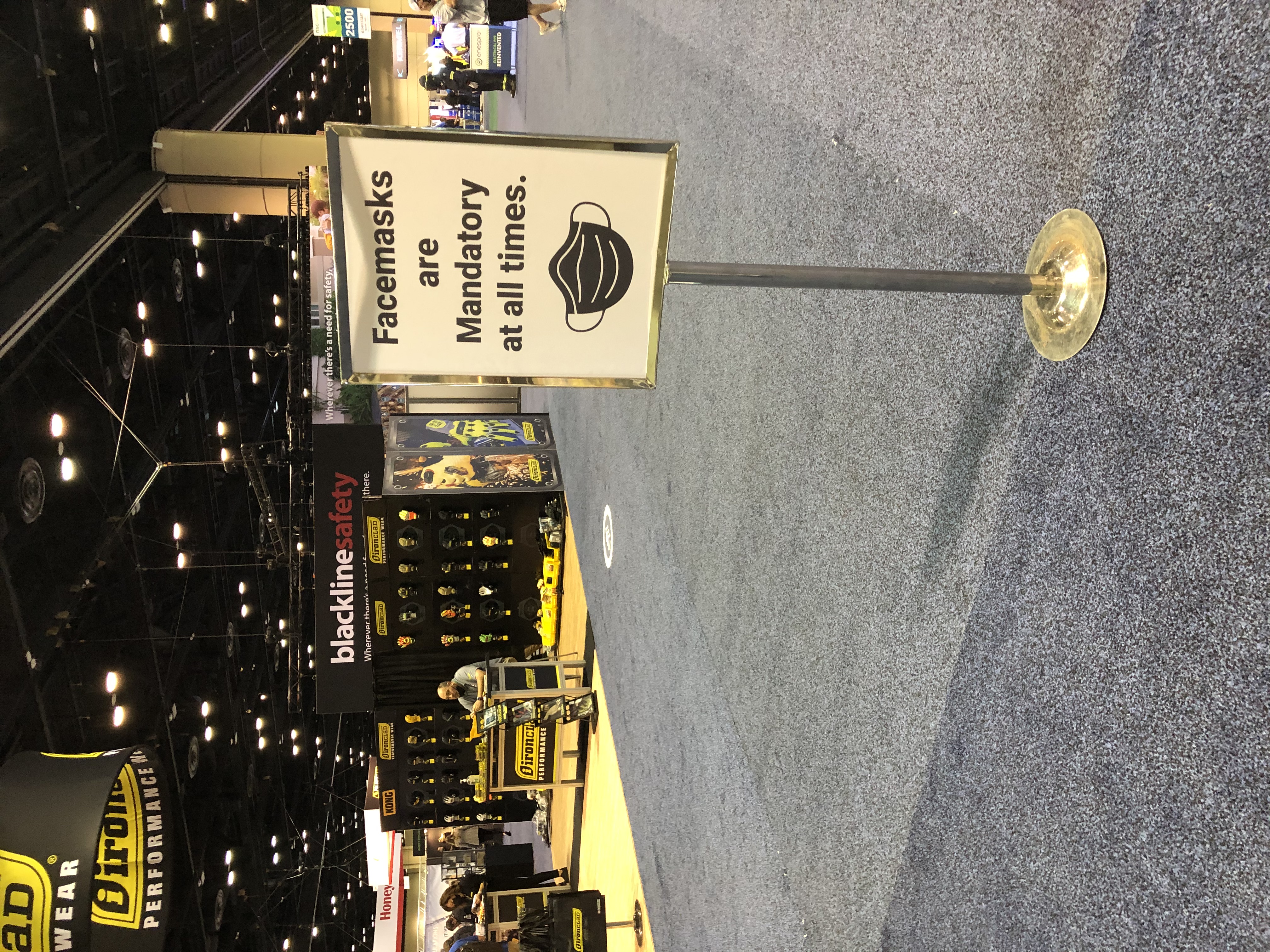Sorry kids, but that was then, this is now. At the American Society of Safety Engineers’ Safety 2013 Professional Development Conference and Expo held in sweltering Las Vegas in late June, the future was on display, not models in high heels. And one got the sense the more you walked the aisles that technology was slamming into safety like a tsunami. So much for safety being a compliance-only commodity business. “Let’s spend as little on safety as we have to.” Good riddance to that idea.
Even the blind can see
I’m not a gadget guy. You’ll never see me waiting in line outside an Apple store for the latest and greatest. I’d be a lost Luddite if not for my two twentysomething kids explaining the workings of iPhones, Global Positioning Systems, tablets, DVRs, Bluetooth, Blu-Ray, parallel parking with a rear-view camera, and so on. But I came away from three days at the ASSE expo fairly convinced the safety and health manager’s job two to five years from now will be dramatically different – for the better – than just about any current job description.
Safety and health pros face the prospect of having a mash-up of so much information at their disposal it will be safety’s version of Big Data. What do you do with it all? How do you break it down? What’s important, what can be trashed? How do you pull out trends, comparisons, red flags? How do you find gaps and traps in your systems?
From reactive to predictive
Technology holds the promise of turning – finally – safety from reactive to predictive. Safety will never be more analytical. More data-driven. The old reliable standard of injury rates will be replaced by a dashboard of indicators, alerts, thresholds, and benchmarks. It will take time, but CEOs will be weaned off OSHA recordables as the only thing most of them know about safety. Finally.
There will be privacy issues with employees. Be prepared for some blow-back because you will know more about the behaviors of your employees, and how they think, their perceptions and opinions, than ever. You’ll know their whereabouts, the speed at which they are driving company vehicles, how aggressive they’re driving, where they park for lunch, how much PPE they consume, how many pairs of safety glasses are dispensed to them from vending machines each month, how their training scores compare to peers, the pace of their learning, their level of engagement in terms of participating in meetings, audits, incident investigations, hazard reporting, near-hit reporting, their compliance or non-compliance with lockout-tagout and confined space entry protocols.
The future is now
Interactive, cross-platform (Mac or PC) training presentations with integrated polling software allows trainers to pose questions about safety perceptions and beliefs. Students use handheld keypads to respond, with results instantly displayed and stored for later analysis. You can involve offsite employees via the web with polling. At safety meetings, this technology allows you to take votes, hold games and competitions, and conduct perception surveys.
Radio Frequency identification (RFID) and barcode technology allow instant and error-free identification of assets during inspections and audits that range from fall protection harnesses to lifting and rigging equipment, fire extinguishers, hoses and other types of equipment. Custom safety scoring allows users to prioritize inspection issues with individual point scales and go beyond simple pass/fail results. Authoring software permits you to customize lockout-tagout procedures. You can ensure that every event is done the way you want. You can assign tasks, lock and unlock isolation points, review approvals, and receive immediate reports.
Following inspections and the analysis of findings, corrective and preventive actions can be automated. Results can be managed by identifying gaps, traps and deficiencies. Priorities are based on risk assessments. Assigning and scheduling follow-up is automated; as is tracking and analyzing results.
Using smartphones, computers, and scanners, employees can send safety observation reports for analysis by professionals. By trending information collected you can predict where incidents are most likely to occur. Predictive models are “fed’ with workplace safety observations, as well as historic worksite legacies such as injuries and fatalities. Advanced learning algorithms and/or decision trees reveal the relationship between safety observation data and historic worksite accidents. Models can identify projects, worksites or work groups with a high risk of incidents. Predictive models are particularly useful when the pile of data or the number of projects, sites or work groups becomes too large for good old paper processing.
From compliance cop to asset manager
In coming years, safety and health pros should be able to once and for all shed their “compliance cop” role restriction to become analysts, monitors, and asset managers. You can track PPE by location or worker; model and serial number; status and condition; date and time of last inspection; missing or stolen goods; and scheduled maintenance. Web-based platforms using hand-held scanners can track training, inspection data, and chemical inventories.
Technology will give safety and health pros the kind of “reach” they never had before. You’ll track remote lone workers. Distance learning students. Contractor and temporary personnel. Multiple locations globally. Workers who bring their own tech devices to work, especially smartphones (a hot topic today known as Bring Your Own Device or BOYD) can be the eyes and ears of the safety and health department, snapping photos or taking video of near-hits and hazardous conditions and emailing the evidence to administrative HQ. Fixed point and portable wireless gas detection networks enable professionals to monitor from a distance toxic industrial chemicals, flammable gases, chemical warfare agents, radiation, weather conditions, GPS-based location information, and the physical condition of responders. When a catastrophic fire or explosion occurs, real-time threat data is securely shared with widely dispersed response teams and external experts anywhere in the world. Teams can coordinate joint operations by simultaneously viewing the same situational data as it comes in.
The new normal
It won’t happen overnight, but there is no turning back technology. Eventually filing cabinets and binders will go the way of Rolodexes and overhead transparencies. The next generation of tech savvy safety and health pros, raised with game consoles in their hands, and adept at scanning and editing information options, will be more than ready for the new normal.




